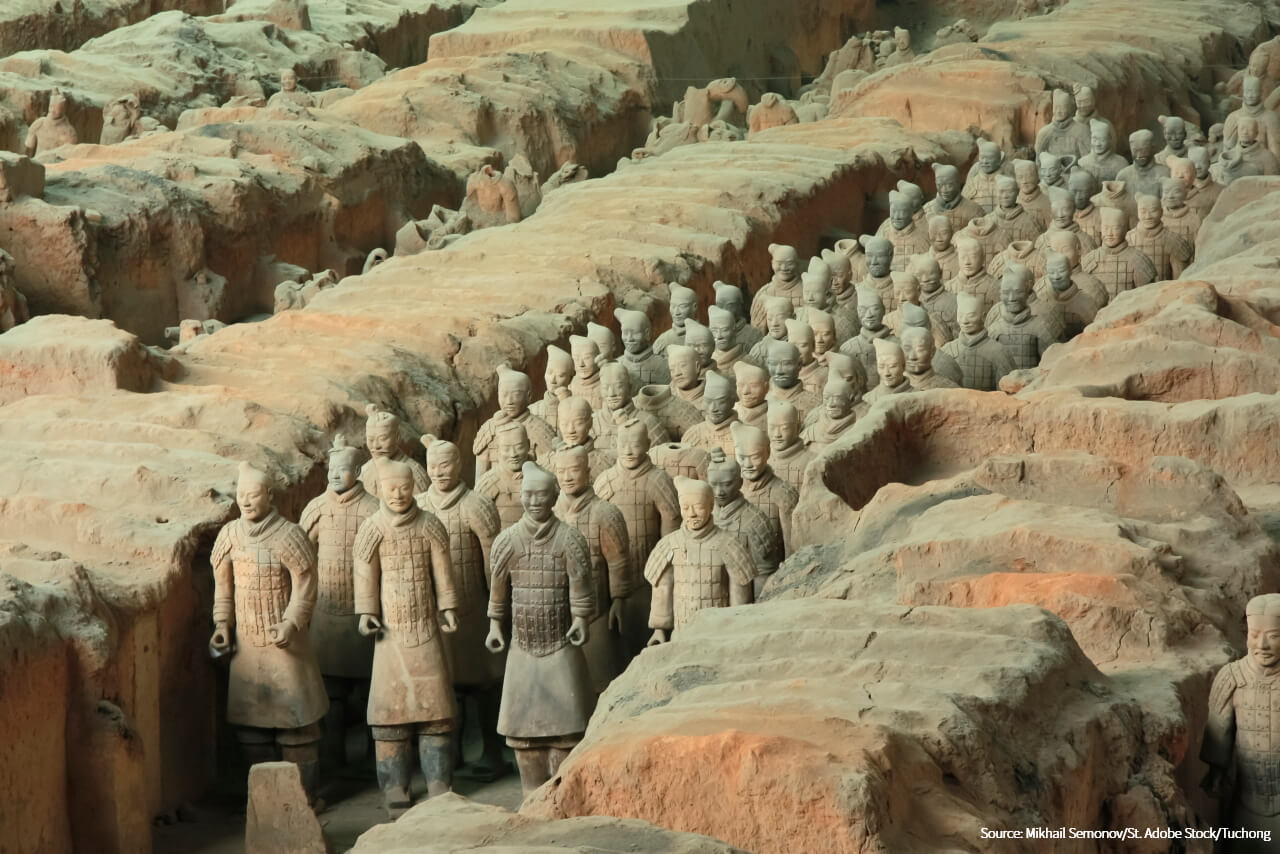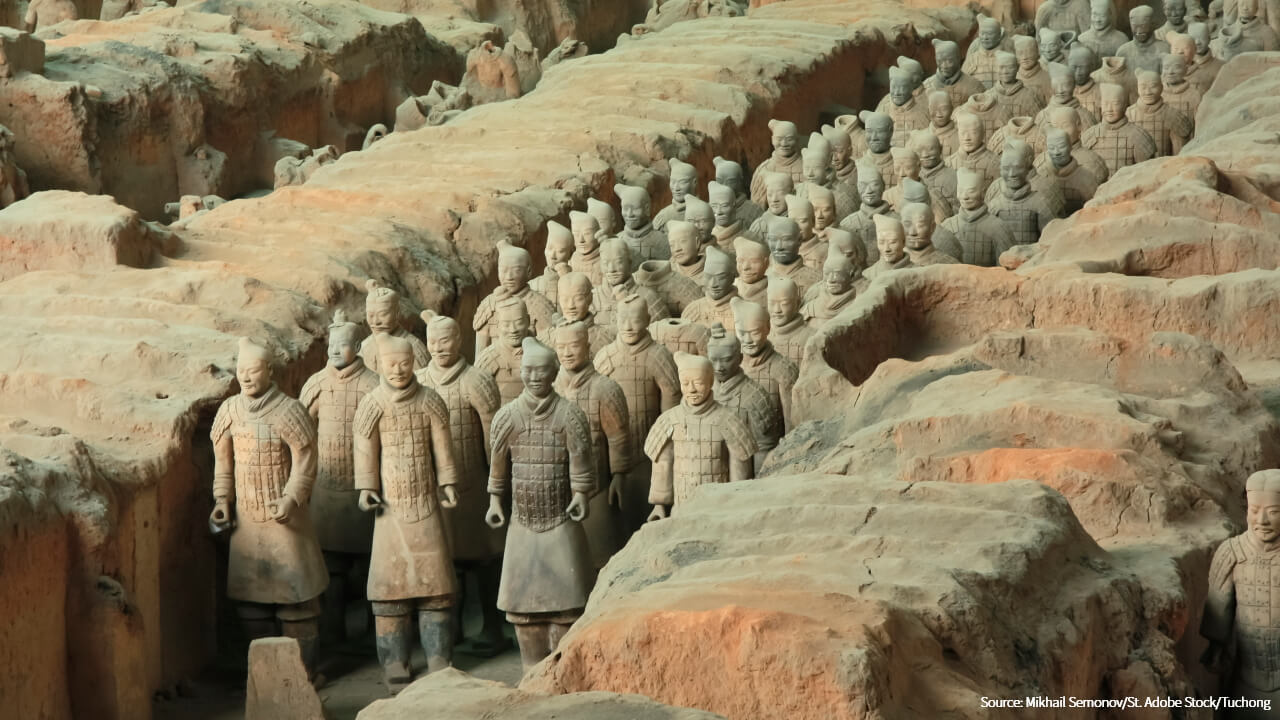
The Terracotta Warriors

Name in Chinese: 兵马俑 Bīng Mǎ Yǒng [binma:jɔ:ŋ]
Duration of Tour: Two or Three Hours
Location: North Qinling Road, Lintong District, Xi’an, Shaanxi Province
Highlights: the History of the Qin Empire and the Ancient Chinese Art of Making Sculptures
Reputations: the World’s No.8 Wonder, a World Cultural Heritage Site, a National Key Historical and Cultural Relic Site under Protection, a National Five-star Scenic Area
The assemblage of Terracotta Warriors is also called the Terracotta Army. It is a component of Emperor Qinshihuang’s Mausoleum, which is the largest tomb in Chinese history. According to historical records, over 720,000 prisoners were forced to build the huge mausoleum. They toiled unceasingly until the emperor passed away. The Mausoleum consists of two ramparts, a group of buildings, and over 400 accompanying pits. A large number of funeral objects were buried in the pits and vaults. There are over 8,000 life-size statues in three pits. The warriors, horses and chariots are lined up and divided into cavalry and infantry units. All the statues were made and buried over 2,000 years ago.
Qinshihuang(259B.C.-210B.C.) was the first emperor in Chinese history who unified the whole China and established China’s first centralized monarchy, the Qin Empire. The Qin was originally a vassal state of the Zhou Dynasty(1046B.C.-256B.C.). At that time, there were many vassal states in China. By the end of the Western Zhou(1046B.C.-771B.C), the monarchs of the Zhou gradually lost control of the vassals. During the Eastern Zhou Dynasty(770B.C.-256B.C.), the vassal states frequently staged annexation wars against their neighbouring states. The Qin was the strongest survivor of the war. In the year of 221 B.C., the ruler of the Qing succeeded in unifying the whole China. He granted himself the title of emperor and claimed that he was the first emperor under heaven. Qin-Shi-Huang means the first emperor of the Qin.
In ancient times, slaves were often killed as sacrifices and buried into the accompanying pits of their maters’ mausoleums. The practice of burying slaves for aristocrats’ funeral was abolished in the Qin’s territory by King Xian(424B.C.-361B.C.), the great-grandfather’s great-grandfather of Emperor Qinshihuang. Therefore, Emperor Qinshihuang arranged thousands of potters to make terracotta warrior for his own burial instead of killing people. However, according to historical records, his successor slaughtered a large number of workers as sacrifices to the late emperor. Even some of the emperor’s concubines were also killed and buried in the mausoleum. Those pits and vaults still remain unearthed.
In March, 1974, some peasant farmers discovered several statues of warriors, when they were digging a well nearby the site. They reported the discovery to the government. Then, some archaeologists came and unearthed the vaults. As one of the top three attractions in Mainland China, the assemblage of Terracotta Warriors and Horses has been billed as the Eighth Wonder of the World and added to the list of world cultural heritage sites by UNESCO in 1987.
How to Get to the Site of Terracotta Warriors
The site of the Terracotta Warriors is located 40 kilometers(25 miles) to the east of downtown Xi’an. It takes about 40 minutes to get to the site from the city by car. Xi’an is the capital city of Shaanxi Province, is the most important aviation hub in Northwestern China. Xi’an Xianyang International Airport is situated 27 kilometers(17 miles) to the centre of the city proper. Tourists can also travel to Xi’an by bullet train from some major cities within Mainland China, such as Beijing, Chengdu and Chongqing.
Opening Hours:
9:00a.m.---5:00p.m.
Suggested Itineraties:
Related Articles:
Author: Tina Luo
Update:

The Terracotta Warriors